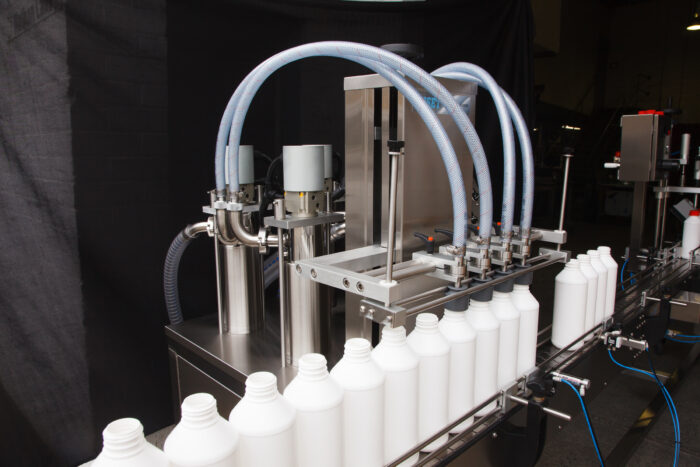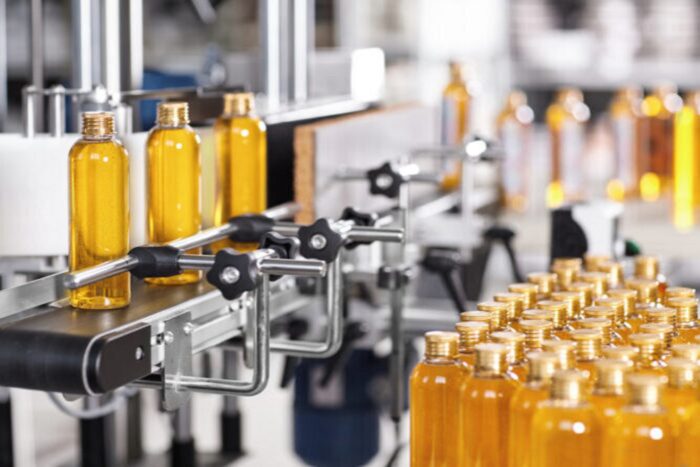Cap tightening machines are a crucial production stage for many industries, ensuring that products reach customers without leakage or spoiling. Although capping machines follow the same general principle of twisting caps onto containers, the increasing complexity of modern product designs makes finding the best machine difficult. To help you navigate the alternatives, this guide describes how cap-tightening machines work and explains the main advantages and disadvantages of each type.
Automation
As with many machines used for liquid filling, capping machines can be fully automatic, semi-automatic, or manual. Automatic machines take care of the entire capping process, while semi-automatic machines require human intervention for some stages, such as feeding containers into the machine or placing caps on bottles ready for tightening. Manual machines are handheld or placed on the bench-top to help operators tighten caps quickly with the correct torque.
Cap Tightening Techniques
Bottles and containers pass into the capping machine, which use a number of different methods to tighten caps. Each of these techniques brings its own advantages and disadvantages that depend on the container, the type and size of cap, and whether the machine works with a single product line or needs to adapt to multiple products.
Inline Screw Capping Machines
Inline screw capping machines, also known as spindle cappers, are particularly common because it is relatively easy to adjust the machines to cope with different cap types and sizes. The machines use three or four tightening discs to spin the cap as the container passes down the conveyor, and side belts grip the bottle tightly to stop it rotating and maintain a stable, upright position.
Inline machines are relatively simple to set up and the operator can manually adjust the torque and also belt, gripper, and cap feed speed. However, although the final set of tightening discs includes a clutch, it is difficult to maintain consistent torque. Accordingly, cap tightness may vary, risking an over-tight cap that proves difficult for consumers to unscrew, or a loose cap that can cause product leakage and spoilage.
Inline machines can cope with a range of cap types, including sports caps, pump caps, and trigger caps, although they may need a specialised cap feeder or a human operator to place the caps on the container ready for tightening. Other options include supplementary machinery, such as Asset Packaging Machines’ Pumptite, which specialises in non-standard cap types.
Another major advantage of inline feeders is the ability to mount them over an existing conveyor section, making it easy to integrate them into a production line.
Retorque Machines
Retorque machines, used where production processes mean that caps need retightening, are very similar to inline screw cappers, but do not need the cap sorting and feed system. One common use of these machines is after induction sealing with aluminium foil, which loosens caps.
Snap Cappers
Snap cappers are similar to inline machines but press the cap into place with an overhead mechanism rather than using side tightening disks to twist the cap.
Chuck Capping Machines
Chuck cap tightening machines offer a different approach to inline systems, and are a better option for some production lines. Rather than using side tightening, the systems use a chuck to grip the cap and spin it onto the bottle. The chuck mechanism contains a clutch to apply the precise torque needed, and machines can use a single head or multiple heads for faster production.
Chuck machines are useful where exact and consistent torque is important, and they are easy to scale up to meet higher production speeds. With the right chuck, they can cope with pump and trigger bottles, but operators need to change the chuck and the feeding mechanism for each cap type. One way businesses get around this issue is to use the same cap for all bottle types.
Another advantage of chuck capping machines is that they are excellent for fixing bottle closers with tamper-evident (TE) bands. Inline machines find it difficult to pick up the closers correctly, leading to crooked caps. In contrast, chucks hold the cap securely and place it correctly every time, helped by downward pressure that forces the TE band over the threads on the bottle.
Finally, chuck machines can use a rotary layout where the bottles pass around carousels, maximising the number of capping heads and making it easy to scale up production.
Roll On Pilfer Proof (ROPP) Capping Machine
As a useful approach for some products, ROPP machines form the threads in the cap when sealing the container. The cap is an unthreaded aluminium blank that the machine presses onto the container, shaping it around the threads on the bottleneck.
The machine is similar to a chuck capper, but without a clutch mechanism because it does not need to apply torque. ROPP machines provide good seals and tamper-proof security, and can include multiple heads. However, adjusting the machine for different caps is difficult, and the bottles need to be manufactured from heavy-duty glass or plastic to cope with the pressure.
Feeder
One important part of cap tightening is the feeding and sorting mechanism used to deliver caps to the machine. If this important part of the process is not up to par, then the capping machines will work at suboptimal capacity.
Vibratory bowl feeders gradually feed the caps from the centre to the edge of the bowl via a spiral track. Only caps in the right orientation tip into the feeder system, with the remainder falling back into the centre of the bowl.
Centrifugal systems include a conical rotor in the centre of the bowl and use this rotary force to push caps to the edge of the bowl at high speed. Those in the right orientation enter the delivery chute, while blown air returns the rest to the centre.
Elevator feeders, useful for wide, flat caps, pick caps from a tray and carry them upwards, with misaligned caps falling back into the hopper via gravity.
Integration
Like many parts of automated filling, capping machines work in tandem with conveyors and other machines on the production line. They are usually the next stage in production after liquid filling and sealing, and these processes may even take place in the same machine. After capping, containers move on to labelling and wrapping before packing by a human operator or machine.
Cap Tightening Machine Examples
Asset Packaging Machines’ AC-A automatic cap tightener mounts over slat conveyors and is capable of tightening a number of threaded cap types. The inline conveyor delivers containers, while caps are placed manually or sent via an automatic feed. Using a photoelectric sensor to determine when a container is present, the machine tightens the cap and moves to the next product.
On the other hand, the Pumptite can tighten different types of pumps, including trigger and plunger pumps, as well as unusual caps such as flip tops or cone-shaped caps. This product comes with self-adjusting wheels to accommodate different diameters (up to 3 cm in height).
Conclusion
Effective cap tightening machines are a mainstay of many businesses, from food production to pharmaceuticals, and selecting the right option can maximise your investment. While this useful guide has given some insight into how capping machines work, the experienced technicians at Asset Packaging Machines understand how to integrate machines into production lines and can help you plan the way forward.
Contact Asset Packaging Machines for more advice on how to improve efficiency.














